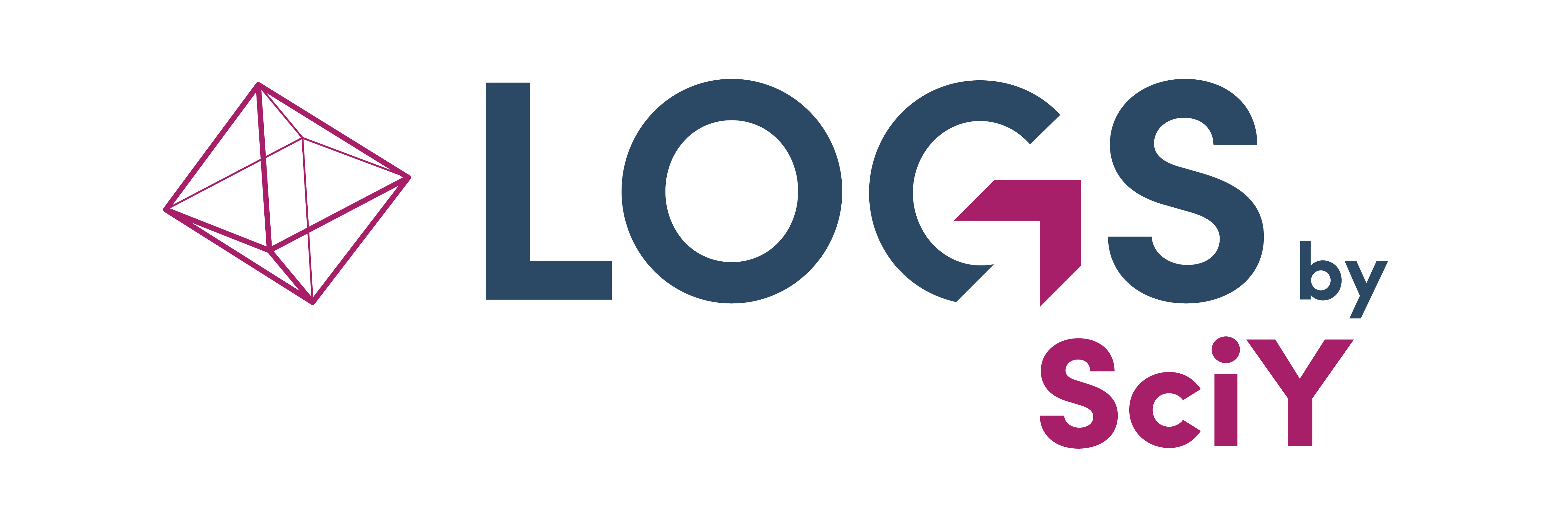Samples
The LOGS organizational structure contains samples. Every measurement is done on a sample and therefore all datasets should be connected to samples. Samples can be described by sample tags that are fully customizable. A LOGS admin can define 6 sample tag categories which can be filled with information about the samples for e.g. concentration or solvent. Please note that also the sample name is a sample tag category. In addition to the sample name, samples can be unambiguously referenced by a unique identifier (ID) which can be found in the URL after the #.
For example: name.logs-repository.com/group/#samples/22
Create samples
Go to “Samples” in the navigation bar and click “Add Sample”. It is required to fill out the blue fields for adding a new sample. If you have admin permissions, you can modify the predefined required fields for samples under More:Site Setting (modify required fields). Start typing in one of the fields to search for existing entries. “Date preparated” and “Prepared by” are filled in automatically but can be changed. The sample property fields are called sample tags and are customized for every LOGS instance by the LOGS admin of your group. If you have any questions about sample tags, please contact your LOGS admin.
Clone samples
If you want to add a new sample that is very similar to a sample that already exists, click on the reference sample in the sample page and choose the “Clone” button on the upper right. This will open the “Add new sample” dialog with pre-filled fields from the reference sample. Make changes or additions if you want and click the save button.
Edit samples
Open a sample by clicking on one sample in the sample table. By clicking on “Edit” the editing dialog opens where you can edit all properties of a sample. If you finished editing the sample click save. Alternatively you can checkbox one or more samples on the “Samples” page and click on the edit button in the yellow dropdown menu at the top of the page. This way you can edit more than one sample at the same time. Sample properties that are marked yellow have multiple values for the selected samples. Editing these properties will override it for all selected samples. Note that you can easily overwrite sample properties this way.
Delete samples
Open a sample by clicking on one sample in the sample table. Click on the arrow next to the blue ”Edit” button and choose delete. You were then asked if you are sure to permanently delete this record? If you click delete, then the sample is permanently deleted. Please note: You cannot delete samples that are assigned to datasets or documents.
Use sample page
The “My samples” view is pre-selected, but you can always modify the view of the samples table. By clicking on “ Include everyone’s samples…” you can see all samples that you are allowed to see in the sample table (based on project permissions and user rights). In the upper right you can change the order of the sample table by “Entry Date”, “Preparation Date”, “Document Count” or “Datasets Count”. You can also choose one or more filters by clicking on the arrows and choosing one option or by starting typing into the fields. Some additional filter options can be found below the drop-down filter menu. Check “Omit Discarded Samples” to leave out discarded samples in the table view (How to delete samples). If you just want to see samples that are defined as a standard then checkbox “Only Standards” (How to set samples as standards). By checkboxing “Include Shared” you can also see samples prepared by other users and are shared with you (for e.g. those samples are part of a project you are assigned to).
Sample number
Every sample in LOGS is assigned a unique ongoing number. The number will be also reflected in datasets that are assigned to this sample. It is not possible to change this number and they are not assigned twice.
Sample details
By clicking on one sample you are redirected to the sample details page. In sample details you see all the information of the sample you provided after you added a new sample. In addition to the customizable sample tags you see which project the sample belongs to and who prepared the sample. LOGS then automatically calculates the age of the sample. In addition to the sample details there are different tabs with additional information (see the following sections).
Datasets measured on this sample
The second tab of the sample details “Datasets” shows a list of datasets that were measured on this sample. The small number in the tab header shows the number of related entries. By clicking on the dataset ID you are redirected to the dataset details page. In the upper right corner you find buttons to “Download all datasets”. By clicking the edit icon next to the sample ID in the table, you can edit the metadata information of the dataset. The “Edit”, “Clone” and “Delete” buttons belong to the sample.
Documents linked to this sample
The third tab of the sample details “Documents” shows all documents that are linked to this sample. The small number in the tab header shows the number of related entries. You can sort the entries alphabetically or chronologically by the entry date with the dropdown menu in the upper right. You can also choose between a list visualisation or grid view.
In More you can find all other sample entries of the same first sample tag which is usually defined as the name. List of samples with the same first sample tag, usually the sample name.
Sample Standards
Samples can be defined as standard samples for example to set up experiments or check instruments. Select a sample and open the edit dialog (or create a new sample) and checkbox “Is the sample suited for setting up experiments?”
